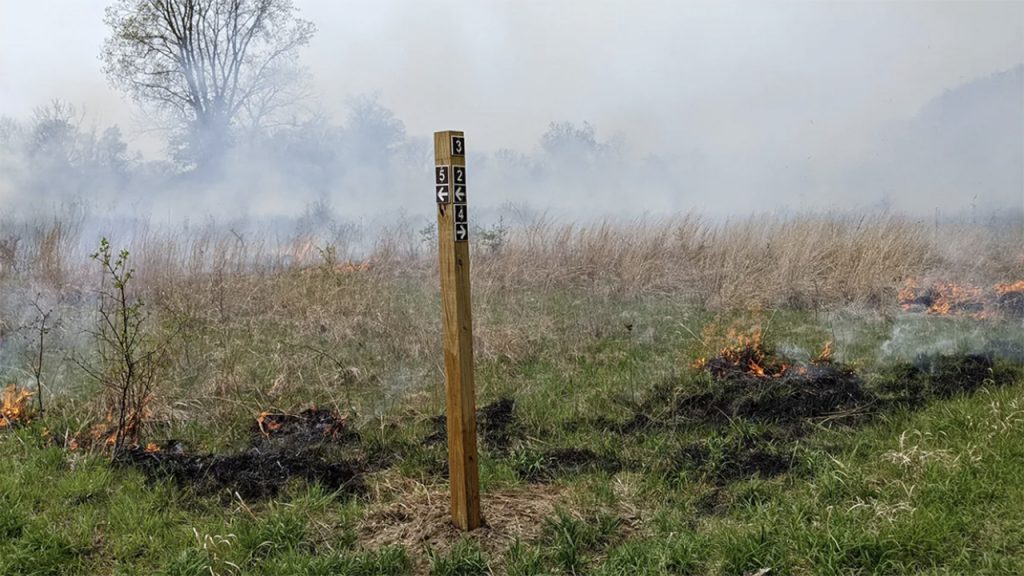Bridge Detroit: Why a part of Rouge Park was recently set on fire
Reporter Jena Brooker says the controlled burn is a practice that has been used for thousands of years by Indigenous people to maintain the health of different ecosystems.

Photo credit: Friends of Rouge Park
A grassy field in Rouge Park – Detroit’s largest park – was recently on fire. But it wasn’t an accident, it was on purpose.
“It was set on fire as a prescribed burn or it can also be called a controlled burn,” says reporter Jena Brooker, who covered the burn for Bridge Detroit. “Fire is a practice that has been used for thousands of years by Indigenous people to maintain the health of different ecosystems.”
Brooker reported some species require fire to reproduce and grow.
“Some species will drop their seeds and they’ll remain dormant until a fire comes through, which literally activates the seeds and then they germinate and sprout,” Brooker says.
Read more: How smoking grass is preserving habitat in Rouge Park
In this case, the burning was done to preserve a 65-acre tallgrass prairie in the park. This type of land is extremely rare in Michigan where 0.1% of what was once here remains, Brooker says.
“It’s so special because prairies used to cover this region of the country and have been destroyed by development and using land for agricultural reasons,” Brooker says, adding, “it’s a native habitat that provides a number of ecosystem services and benefits for a number of species. So it’s just incredibly rare. And it’s unique that we have it here in Detroit.”
WDET’s Laura Herberg interviewed Brooker about the controlled burn in Rouge Park. Click on the audio player at the top of the page to hear their conversation.
Bridge Detroit is one of WDET’s reporting partners.
Trusted, accurate, up-to-date.
WDET strives to make our journalism accessible to everyone. As a public media institution, we maintain our journalistic integrity through independent support from readers like you. If you value WDET as your source of news, music and conversation, please make a gift today.
